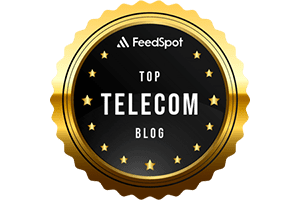OpenAI announces new open weight, open source GPT models which Orange will deploy
Overview:
OpenAI today introduced two new open-weight, open-source GPT models (gpt-oss-120b and gpt-oss-20b) designed to deliver top-tier performance at a lower cost. Available under the flexible Apache 2.0 license, these models outperform similarly sized open models on reasoning tasks, demonstrate strong tool use capabilities, and are optimized for efficient deployment on consumer hardware. They were trained using a mix of reinforcement learning and techniques informed by OpenAI’s most advanced internal models, including o3 and other frontier systems.
These two new AI models require much less compute power to run, with the gpt-oss20B version able to run on just 16 GB of memory. The smaller memory size and less compute power enables OpenAI’s models to run in a wider variety of environments, including at the network edge. The open weights mean those using the models can tweak the training parameters and customize them for specific tasks.
OpenAI has been working with early partner companies, including AI Sweden, Orange, and Snowflake to learn about real-world applications of our open models, from hosting these models on-premises for data security to fine-tuning them on specialized datasets. We’re excited to provide these best-in-class open models to empower everyone—from individual developers to large enterprises to governments—to run and customize AI on their own infrastructure. Coupled with the models available in our API, developers can choose the performance, cost, and latency they need to power AI workflows.
In lockstep with OpenAI, France’s Orange today announced plans to deploy the new OpenAI models in its regional cloud data centers as well as small on-premises servers and edge sites to meet demand for sovereign AI solutions. Orange’s deep AI engineering talent enables it to customize and distill the OpenAI models for specific tasks, effectively creating smaller sub-models for particular use-cases, while ensuring the protection of all sensitive data used in these customized models. This process facilitates innovative use-cases in network operations and will enable Orange to build on its existing suite of ‘Live Intelligence’ AI solutions for enterprises, as well as utilizing it for its own operational needs to improve efficiency, and drive cost savings.
Using AI to improve the quality and resilience of its networks, for example by enabling Orange to more easily explore and diagnose complex network issues with the help of AI. This can be achieved with trusted AI models that operate entirely within Orange sovereign data centers where Orange has complete control over the use of sensitive network data. This ability to create customized, secure, and sovereign AI models for network use cases is a key enabler in Orange’s mission to achieve higher levels of automation across all of its networks.
Steve Jarrett, Orange’s Chief AI Officer, noted the decision to use state-of-the-art open-weight models will allow it to drive “new use cases to address sensitive enterprise needs, help manage our networks, enable innovating customer care solutions including African regional languages, and much more.”
Performance of the new OpenAI models:
gpt-oss-120b outperforms OpenAI o3‑mini and matches or exceeds OpenAI o4-mini on competition coding (Codeforces), general problem solving (MMLU and HLE) and tool calling (TauBench). It furthermore does even better than o4-mini on health-related queries (HealthBench) and competition mathematics (AIME 2024 & 2025). gpt-oss-20b matches or exceeds OpenAI o3‑mini on these same evals, despite its small size, even outperforming it on competition mathematics and health.
Sovereign AI Market Forecasts:
Open-weight and open-source AI models play a significant role in enabling and shaping the development of Sovereign AI, which refers to a nation’s or organization’s ability to control its own AI technologies, data, and infrastructure to meet its specific needs and regulations.
Sovereign AI refers to a nation’s ability to control and manage its own AI development and deployment, including data, infrastructure, and talent. It’s about ensuring a country’s strategic autonomy in the realm of artificial intelligence, enabling them to leverage AI for their own economic, social, and security interests, while adhering to their own values and regulations.
Bank of America’s financial analysts recently forecast the sovereign AI market segment could become a “$50 billion a year opportunity, accounting for 10%–15% of the global $450–$500 billion AI infrastructure market.”
BofA analysts said, “Sovereign AI nicely complements commercial cloud investments with a focus on training and inference of LLMs in local culture, language and needs,” and could mitigate challenges such as “limited power availability for data centers in US” and trade restrictions with China.
References:
https://openai.com/index/introducing-gpt-oss/
https://newsroom.orange.com/orange-and-openai-collaborate-on-trusted-responsible-and-inclusive-ai/
https://finance.yahoo.com/news/nvidia-amd-targets-raised-bofa-162314196.html
Open AI raises $8.3B and is valued at $300B; AI speculative mania rivals Dot-com bubble
OpenAI partners with G42 to build giant data center for Stargate UAE project
Reuters & Bloomberg: OpenAI to design “inference AI” chip with Broadcom and TSMC



